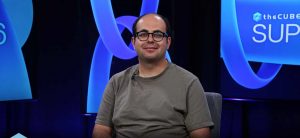Getting Tesla Wrong
Leading up to Tesla’s quarterly report, I was under the impression that the consensus was overwhelmingly bearish. Short interest was high, and there is no shortage of opinionated articles proclaiming electric cars to be terrible, dead and un-investable.
With this type of background, a mediocre quarterly report would be enough for a stock to trade up, in a neutral market. Yet, it got smacked 8.77% yesterday. What gives?![]()
My question implies that I think it was, on the margin, incrementally speaking, a positive quarterly report. Here is why I think so:
The fear going into the quarter had primarily been around the bottom line outlook for 2013, and whether Tesla would have to launch another follow-on equity offering in order to fund the heavy working capital requirements. This did not happen. Yes, I’m looking at you, John Petersen. [He has repeatedly published predictions that Tesla is just now running out of cash, and must raise new equity immediately.]
Instead, the single fact from the Tesla report that distills the entire incremental verdict is this: Tesla will be profitable this quarter (1Q13), three quarters ahead of the previous plan (4Q13). Everything else from the quarterly report was noise.
That said, let’s dig into a couple of tidbits from the noise:
1. Word Of Mouth Sales
To understand why Tesla is succeeding in the market, you have to understand how lyric its customers are. In the big scheme of things, Tesla has essentially no marketing presence — very few people on Earth have been to one of the few Tesla stores, and Tesla does not advertise.
What Tesla has found is that most of its new sales are now some form of referral sales. Basically, the people who got their Teslas already can’t stop talking about them with their friends, neighbors, relatives and co-workers. They won’t give up until they have sold a few of them.
As a result, Tesla adoption is occurring disproportionately in clusters now. This is particularly evident in Tesla’s Silicon Valley home market. Today, as I have been every day in the recent weeks, I saw more Teslas than I could bother counting, and I wasn’t even out a lot.
The word “sustainable” is being thrown around a lot, and I usually react against it with acute nausea. However, I will argue that there is nothing as sustainable for Tesla as passionate owners who sell the car for you. THAT’S sustainability!
2. Battery size mix
Tesla said that less than 10% of orders are for the smallest battery, the 40 kWh. It also said that more than 50% of orders are for the largest battery, the 85 kWh. Somewhere in-between are sales for the 60 kWh battery.
Think about this for a second. The pundit-sphere is filled with arguments that Tesla makes a product that’s too expensive, and that the pressure is for the car to become cheaper.
The evidence shows otherwise. The overwhelming percentage of sales is for versions starting at more than $80,000, with recent averages near $100,000. The demand for Teslas below the $70,000 mark is basically tiny.
Market Segmentation and Focus
This leads us to a critical mistake made by almost all Tesla analysts. The critical flaw is that they tend of think in one of the two following terms: “Tesla is a play on electric cars” and “The car must be good enough for most or all people.”
First things first: Tesla is NOT a play on electric cars. Tesla IS a play on “extreme performance cars that fit 5 adults and gigantic luggage.”
There are plenty of different kinds of electric cars in the market. Not all of them have done as well as Tesla, and these discrepancies will be a lot clearer in 2013.
To believe otherwise is to claim that a Porsche 911 is a bet on the car market. A Porsche 911 is a lifestyle purchase, alternatively an extreme performance car. It’s a toy, a mid-life crisis pill. A Porsche 911 is rarely taken on a road trip. How many people do you know who has taken their 911 on a 200-plus mile trip, ever?
Likewise, the Tesla is a lifestyle purchase. What kind of lifestyle? Who cares? Different people have different motives. Some people are just techies. Others want a silent car. Many want a uniquely fast car. Others want one-pedal driving. Misguided souls think they are saving a lethal polar bear.
The point is this: There are millions of people around the world who are on their third or fourth Mercedes S550 or BMW 750. They’re up for renewal, and they’re bored. Another three years, another same car AGAIN?
They already have two or three other cars in the garage. Why would they NOT get a Tesla? This is why, in Silicon Valley, Tesla already has garnered a 100% market share in the last two months: Tesla: 100% Market Share in Silicon Valley
Fashion swings are dramatic. They go in waves, every few years. Right now, it’s swinging heavily in Tesla’s favor, just like the iPhone two to three years ago.
This is ultimately Tesla’s peril, though. In due course, the probability that other car makers will trump Tesla’s cool/fashion status is high. Perhaps not this year, or even next, but then again — just look at all of these pictures (scroll all the way down): This Is Volkswagen’s Crazy Awesome.
Let’s say that Volkswagen was to make a version of this car with less expensive materials (steel and plastic, instead of carbon fiber), so it cost $39,000 instead of $100,000, it would rapidly become THE IT car. This is just one example of numerous outstanding electric car models that are on deck for 2014, 2015 and 2016.
If you think the Tesla is cool, Volkswagen, and soon BMW, General Motors’ Cadillac, and every other car maker, will have a weapon somewhere in their pipeline to persuade you otherwise. The question is just when, and how those future products will be segmented in a market that’s just dying to be segmented even more.
For now, though, Tesla is alone in its segment. It’s got a monopoly on a formula that has passionate traction by people willing to stand in line to pay $100,000 for the most amazing car in the world. This success may not last forever, but at least this most recent quarterly earnings report was an incremental positive.
[Cross posted at The Street]
A message from John Furrier, co-founder of SiliconANGLE:
Your vote of support is important to us and it helps us keep the content FREE.
One click below supports our mission to provide free, deep, and relevant content.
Join our community on YouTube
Join the community that includes more than 15,000 #CubeAlumni experts, including Amazon.com CEO Andy Jassy, Dell Technologies founder and CEO Michael Dell, Intel CEO Pat Gelsinger, and many more luminaries and experts.
THANK YOU









